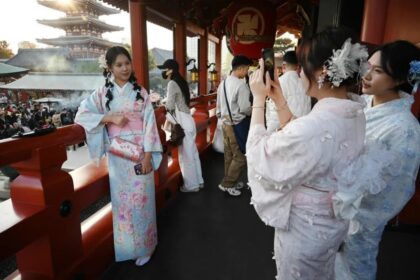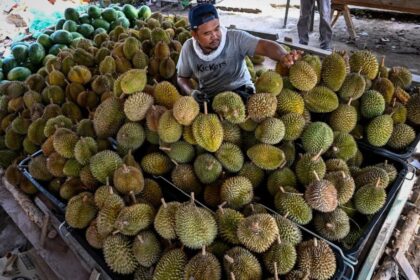The Enchanting Spectacle of Himebotaru Fireflies on Mt. Oritsume
Each summer, the forests of Mt. Oritsume in Iwate Prefecture, Japan, are transformed into a living tapestry of light. The himebotaru fireflies, a native species known for their ethereal glow, emerge in their millions, casting a dreamlike illumination across the mountain’s ancient woodlands. This natural phenomenon, peaking from early to mid-July, draws visitors from across Japan and beyond, eager to witness what many describe as “nature’s own illumination.”
- The Enchanting Spectacle of Himebotaru Fireflies on Mt. Oritsume
- What Makes Mt. Oritsume Ideal for Himebotaru Fireflies?
- The Life and Light of Himebotaru: Understanding the Species
- Experiencing the Firefly Phenomenon: Tourism and Conservation
- The Broader Ecological and Cultural Significance
- Challenges and Future Prospects for Firefly Conservation
- Visiting Mt. Oritsume: Practical Information
- In Summary
Mt. Oritsume, standing at 852 meters, is not only a scenic landmark but also a vital ecological haven. The area near its summit, rich in spring water and dense with Quercus (oak) and beech forests, provides the perfect habitat for these delicate insects. The significance of this site is underscored by its designation as a prefectural natural monument, recognizing both its environmental and cultural value.
What Makes Mt. Oritsume Ideal for Himebotaru Fireflies?
The unique environment of Mt. Oritsume is central to the thriving population of himebotaru. The mountain’s summit and slopes are crowned with primeval forests of broad-leafed beech and Mongolian oak trees. These forests, combined with abundant natural springs, create moist, nutrient-rich soil—an essential condition for the terrestrial himebotaru to breed and thrive.
According to local tourism sources, Mt. Oritsume is the largest himebotaru habitat in the Tohoku region, with estimates of over one million fireflies inhabiting the area during peak season. The fireflies’ presence is so significant that in 2018, the “Mt. Orizume firefly habitat” was officially designated a natural monument by Iwate Prefecture, further cementing its status as a site of ecological importance.
To protect this delicate ecosystem, local authorities have implemented traffic restrictions and require advance reservations for visitors during the fireflies’ breeding season. These measures, managed by the Mt. Orizume Promotion Council, help minimize human impact and ensure the continued survival of the firefly population.
The Life and Light of Himebotaru: Understanding the Species
Himebotaru (Luciola parvula) are a type of firefly native to Japan. Unlike their aquatic cousins, himebotaru are terrestrial, with larvae that develop in the moist leaf litter and wetlands of the forest floor. Both the eggs and larvae emit a faint light, but it is the adults that create the mesmerizing spectacle for which Mt. Oritsume is famous.
Adult himebotaru are small, measuring about 6mm in length. They have black bodies with a distinctive pale red prothorax. The males, which are capable of flight, emit flashes of light at a rate of about once per second as they search for mates. The smaller, flightless females emit light less frequently, about once every two or three seconds. This synchronized bioluminescence is not only a mating signal but also a key part of the fireflies’ enchanting display.
The peak of the himebotaru’s breeding season, from early to mid-July, is when their bioluminescence is at its brightest. During this period, the forest comes alive with sharp, fiery flashes of light, creating a scene that many liken to a midsummer night’s dream.
Experiencing the Firefly Phenomenon: Tourism and Conservation
The annual emergence of the himebotaru has become a major draw for eco-tourists and nature enthusiasts. Local municipalities, including Ninohe City, Karumai Town, and Kunohe Village, organize shuttle bus tours and guided night walks to help visitors experience the spectacle while minimizing disturbance to the fireflies’ habitat. Volunteer guides provide insights into the fireflies’ life cycle and the ecological significance of the area.
To further protect the fireflies during their sensitive breeding period, access to the main viewing areas is strictly controlled. Visitors must make reservations in advance, and traffic restrictions are enforced to reduce light and noise pollution. These efforts reflect a growing awareness of the need to balance tourism with conservation, ensuring that future generations can continue to enjoy this natural wonder.
Takeshi Morohashi, an office worker visiting from Tama in Tokyo, expressed his awe at the scene:
“It looks like nature’s own illumination—so beautiful.”
Such reactions are common among visitors, many of whom describe the experience as both magical and humbling.
The Broader Ecological and Cultural Significance
Mt. Oritsume’s firefly population is not only a local treasure but also a symbol of Japan’s rich natural heritage. The mountain itself is located at the northernmost point of the Kitakami mountain range and offers panoramic views of the Pacific Ocean, Mount Iwate, and the night sky over Hachinohe City in neighboring Aomori Prefecture. The surrounding region is renowned for its natural beauty, including beechwood forests, wetlands, and a diverse array of flora and fauna.
Fireflies hold a special place in Japanese culture, often associated with the fleeting beauty of summer and the transience of life. Their appearance in poetry, art, and folklore reflects a deep appreciation for the rhythms of nature. The himebotaru of Mt. Oritsume, with their delicate glow, embody this cultural symbolism and serve as a reminder of the importance of preserving natural habitats.
Challenges and Future Prospects for Firefly Conservation
Despite the success of current conservation efforts, the himebotaru and their habitat face ongoing challenges. Habitat loss due to development, pollution, and climate change all pose threats to firefly populations across Japan. The strict management of visitor access at Mt. Oritsume is a model for other regions, demonstrating how tourism and conservation can coexist when carefully planned.
Local authorities and environmental groups continue to monitor the firefly population and the health of the forest ecosystem. Educational programs and community involvement are key components of these efforts, fostering a sense of stewardship among residents and visitors alike.
Visiting Mt. Oritsume: Practical Information
For those wishing to experience the himebotaru fireflies, the best time to visit Mt. Oritsume is from early to mid-July, when the fireflies’ bioluminescence is at its peak. Reservations are required during this period and can be made through the Mt. Orizume Promotion Council’s website. Shuttle buses operate from Ninohe Station, and guided tours are available to enhance the visitor experience.
In addition to the fireflies, the region offers a wealth of natural attractions, including hiking trails, panoramic viewpoints, and nearby parks such as Karumai’s Yukiyagawa Dam Forest Park. Visitors are encouraged to explore the area’s diverse landscapes and sample local delicacies, such as sarunashi ice cream made from native kiwi berries.
In Summary
- Mt. Oritsume in Iwate Prefecture is home to one of Japan’s largest populations of himebotaru fireflies, with over one million individuals lighting up the forest each summer.
- The mountain’s unique environment—rich in spring water and ancient forests—provides ideal conditions for the fireflies’ breeding and survival.
- The himebotaru’s synchronized bioluminescence creates a breathtaking natural spectacle, drawing visitors from across Japan and beyond.
- Strict conservation measures, including traffic restrictions and advance reservations, help protect the fireflies during their sensitive breeding season.
- The fireflies hold deep cultural significance in Japan, symbolizing the beauty and transience of nature.
- Ongoing conservation efforts and community involvement are essential to ensuring the continued survival of the himebotaru and their habitat.
- Visitors to Mt. Oritsume can enjoy not only the fireflies but also the region’s stunning natural scenery and local attractions.












